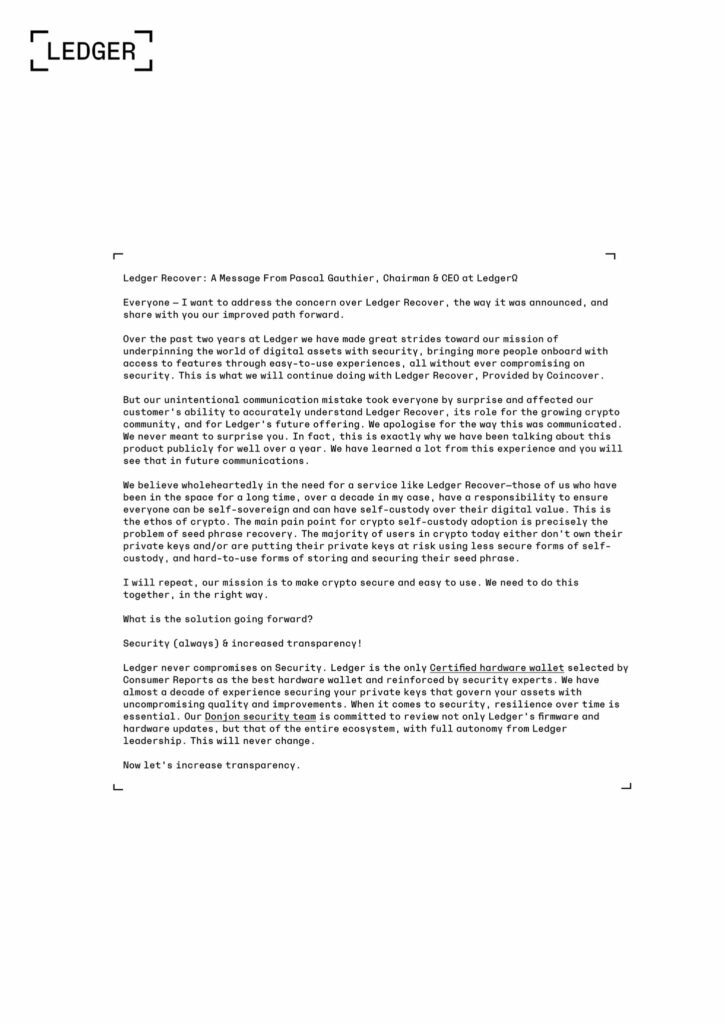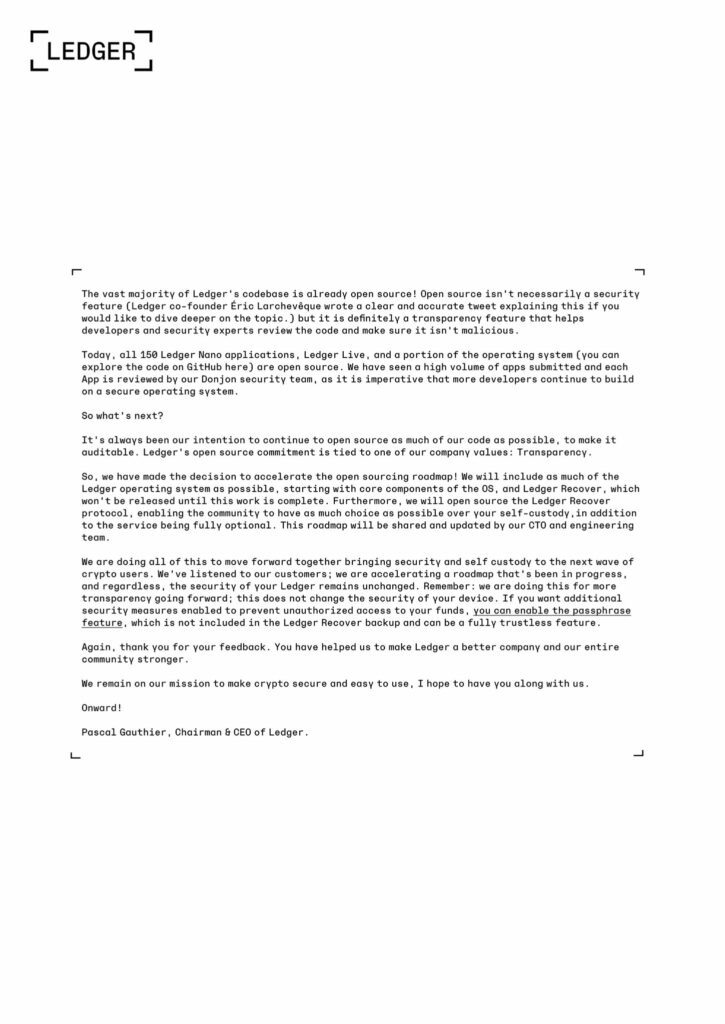The Risks and Benefits of Crypto Services Accessing Crypto Keys: A Closer Look at Ledger’s Approach
In a recent update, the CEO and CTO of Ledger, a leading hardware wallet provider, announced the postponement of a controversial firmware update. Alongside this announcement, they outlined their plans to open source Ledger Recover, publish a whitepaper, and make the service auditable. Additionally, Ledger intends to gradually open source most of its operating system (OS). This blog post delves into the risks associated with crypto services having access to crypto keys, while also highlighting the pros and cons of Ledger’s approach.
The Importance of Ledger Recover: Ledger’s CEO, Pascal Gauthier, emphasizes the need for a service like Ledger Recover, which aims to address the problem of seed phrase recovery. The company’s mission is to make crypto secure and easy to use, ensuring individuals can maintain self-custody and sovereignty over their digital assets. Gauthier acknowledges the unintentional communication mistake that caused confusion among customers and expresses the company’s commitment to learn from this experience.
The Pros of Ledger’s Approach:
- Security First: Ledger has established itself as a reputable hardware wallet provider, prioritizing the security of users’ private keys. The company boasts a decade of experience and is the only certified hardware wallet recommended by Consumer Reports. Their security team, Donjon, independently reviews firmware, hardware updates, and the wider crypto ecosystem.
- Increased Transparency: While open-source code is not inherently a security feature, Ledger believes in the value of transparency. The majority of Ledger’s codebase, including Ledger Nano applications and a portion of the operating system, is already open source. Opening up more code for review allows developers and security experts to ensure the absence of malicious intent.
- Accelerated Open Sourcing: Ledger is committed to accelerating its open-source efforts. The company plans to open source core components of its operating system, starting with Ledger Recover. The protocol for Ledger Recover will also be made open source, giving the community greater choice and control over their self-custody options. This commitment aligns with Ledger’s value of transparency and aims to bring security and self-custody to a wider audience.
The Cons to Consider:
- Dependency on Third-Party Services: Ledger Recover is provided by Coincover, introducing a potential risk of relying on a third-party service for seed phrase recovery. While Ledger emphasizes the importance of security, users must consider the implications of entrusting their recovery process to an external entity.
- Balancing Security and Ease of Use: Ledger’s mission to make crypto secure and easy to use requires careful consideration. Striking the right balance between user-friendliness and robust security measures can be a challenge. Users should assess the trade-offs and determine their preferred level of security and convenience.
Ledger’s recent announcements and their approach to addressing the risks associated with crypto services having access to crypto keys reveal their commitment to security and transparency. While Ledger Recover aims to simplify the seed phrase recovery process, users should weigh the pros and cons of relying on third-party services. It is crucial for individuals to understand the implications and make informed decisions regarding their crypto assets’ security and self-custody. As Ledger continues to evolve, they invite the crypto community to join them on their mission to make crypto secure and easy to use, emphasizing the importance of collaboration and transparency moving forward.
shout out to OKhotshot for putting this on our radar!
Ledger CEO and their CTO put out messages an hour ago saying the controversial firmware update will be postponed until further notice. They'll also
– Open source Ledger Recover
– Publish Recover whitepaper
– Make Recover auditable
– and gradually open source most of OSwdyt? pic.twitter.com/lkbqtXjJpf
— OKHotshot (@NFTherder) May 23, 2023
The post Lessons Learned: Ledger Recovers, Backtracking on Firmware Update appeared first on NFT CULTURE.


